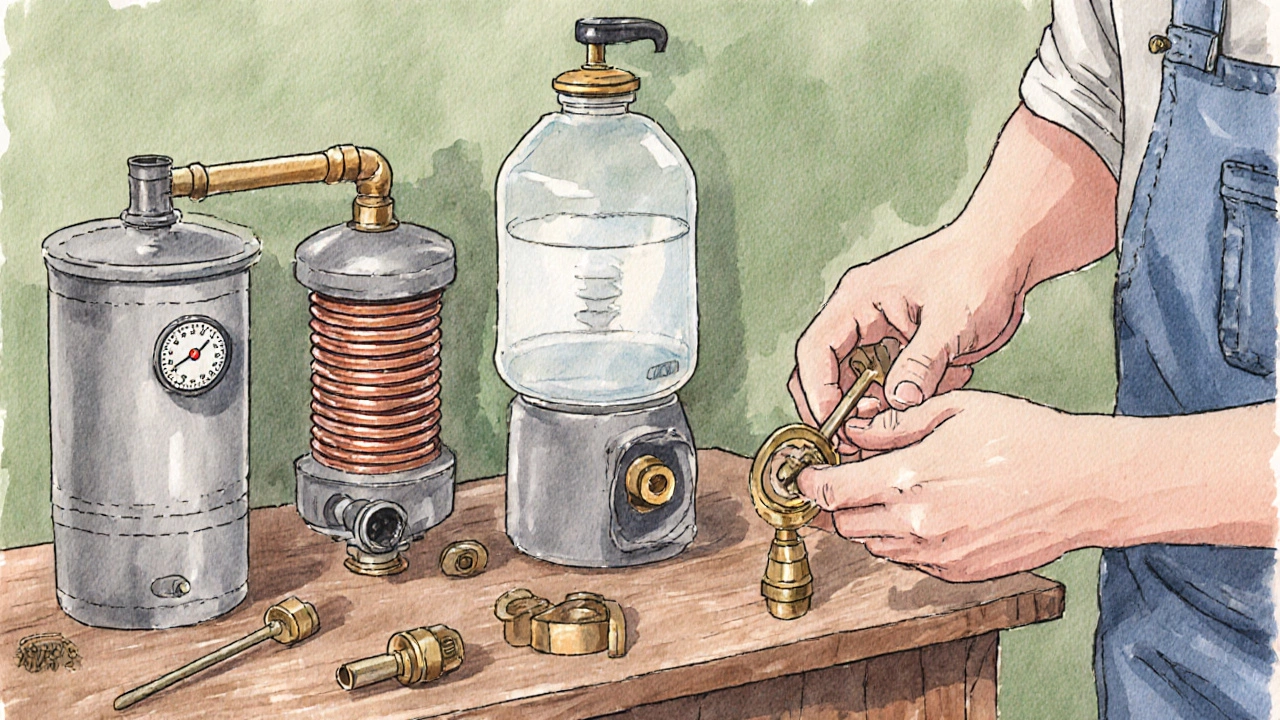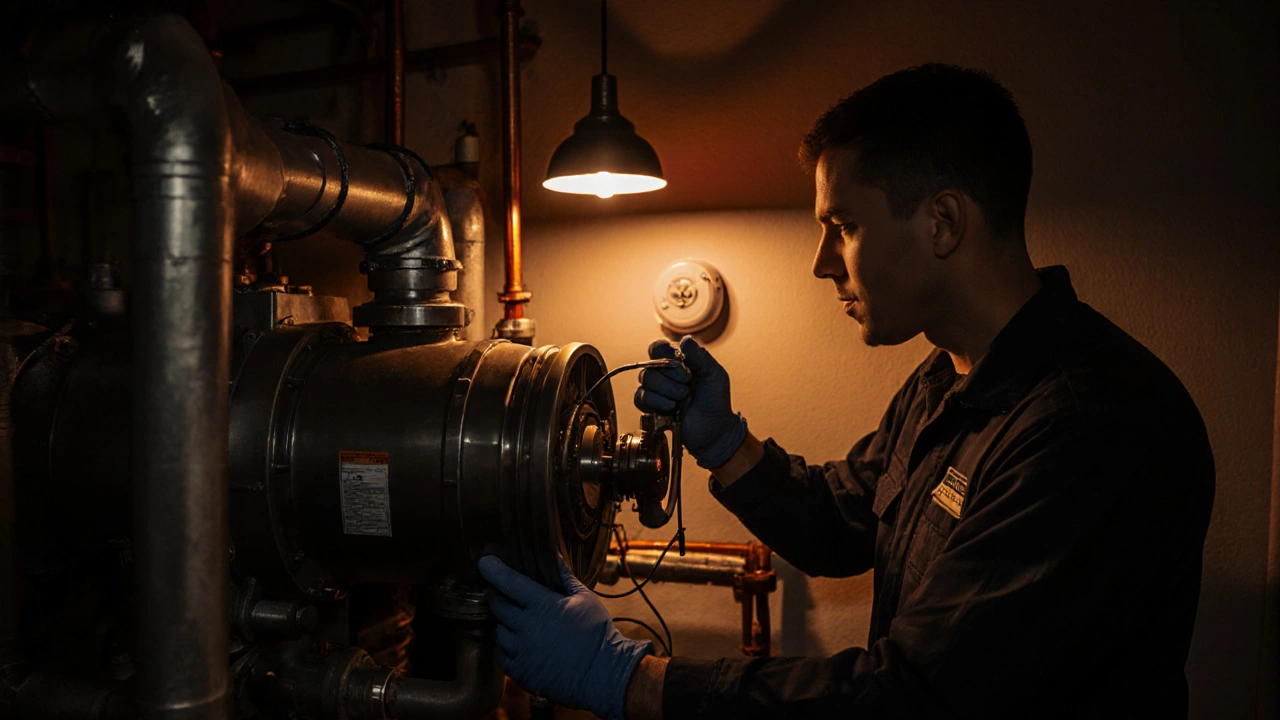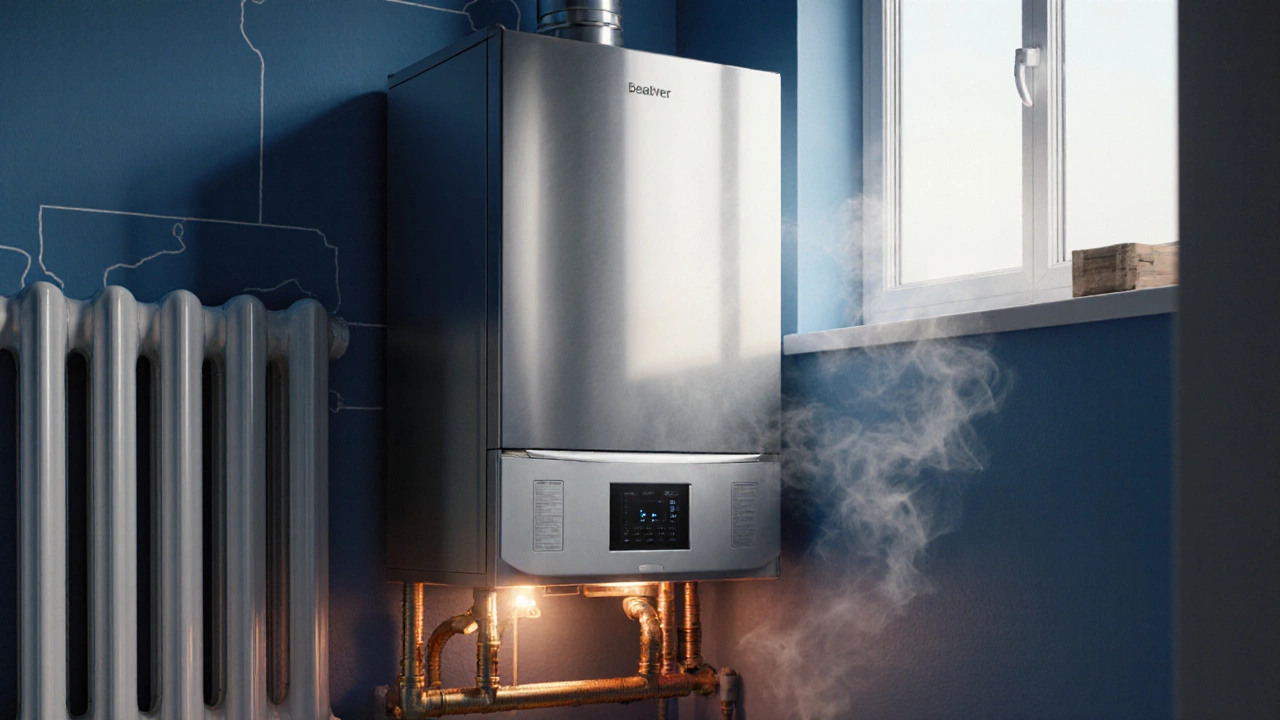Boiler Pressure Check Calculator
Your boiler should maintain a pressure between 1.0 and 1.5 bar when cold. Check your pressure gauge regularly to ensure proper operation and prevent damage.
When it comes to home heating, Boiler is a sealed system that heats water and circulates it through radiators or under‑floor pipes. Regular boiler maintenance keeps it efficient, cuts fuel bills and, most importantly, prevents dangerous leaks or carbon monoxide exposure.
Why a Maintenance Routine Pays Off
Even the most robust boiler will lose efficiency over time. Scale builds up on the Heat exchanger, seals shrink, and corrosion can develop on the Pressure relief valve. Each of these issues forces the unit to work harder, raising energy costs by 10‑15 % on average. A well‑kept boiler also lasts longer-studies from the UK Energy Saving Trust show a properly serviced boiler can exceed its 15‑year warranty by up to five extra years.
Core Components You Need to Watch
- Thermostat: Controls temperature set‑points; a faulty sensor can cause short cycling.
- Expansion tank: Absorbs water expansion; loss of pressure usually points to a leaking bladder.
- Combustion chamber: Where gas burns; soot buildup reduces heat transfer.
- Flue: Exhausts gases; blockages can cause dangerous CO back‑draft.
Understanding these parts helps you spot problems early and decide when a DIY fix is enough or when a Professional service technician should be called.
Monthly DIY Checks (Quick Wins)
- Pressure gauge: Aim for 1-1.5 bar when cold. If it falls below, bleed radiators or top‑up the system.
- Visible leaks: Look around pipe joints, the boiler base and the pressure relief valve for drips.
- Radiator warmth: Feel each radiator; cold spots often mean trapped air-use a radiator key to bleed.
- Thermostat response: Set a higher temperature and verify the boiler fires within a few minutes.
- Flue clearance: Ensure the outdoor vent isn’t blocked by debris or snow.
These tasks take less than 15 minutes each month and catch 70 % of common failures before they become emergencies.

Annual Professional Service Checklist
Once a year, ideally before the heating season, schedule a certified technician. Here’s what they’ll do:
| Task | Why It Matters | Typical Cost (USD) |
|---|---|---|
| Inspect and clean heat exchanger | Restores thermal efficiency | $120‑$180 |
| Test pressure relief valve | Ensures over‑pressure safety | $30‑$50 |
| Check gas valve and ignition | Prevents leaks and mis‑fires | $70‑$100 |
| Analyse combustion gases | Detects CO and ensures proper fuel‑air mix | $80‑$130 |
| Verify expansion tank integrity | Averts pressure loss and water hammer | $40‑$70 |
| Flush system (if needed) | Removes scale from heat exchanger | $150‑$250 |
Most homeowners see a 5‑10 % reduction in their heating bill after a thorough service because the boiler returns to its design efficiency (usually 90‑95 %).
Seasonal Adjustments: Pre‑Winter Prep
Winter puts extra demand on the system. Follow these steps two weeks before the first cold night:
- Top‑up the water level to maintain the proper pressure.
- Increase the thermostat set‑point by 2 °F to test response.
- Inspect the outdoor flue for ice buildup; use a flue brush if needed.
- Check the boiler’s condensate pump (if applicable) for clogs.
If anything feels off, don’t wait for a freeze‑up-call a technician now. A broken boiler in the middle of a snowstorm can cost upwards of $2,000 in emergency repairs and hotel stays.
Red Flags: When DIY Isn’t Enough
Even the savviest homeowner should know the boundary between simple maintenance and serious fault. Look out for:
- Repeated short‑cycling (boiler turns on/off every few minutes) - may signal a faulty thermostat or airflow issue.
- Persistent low pressure after bleeding radiators - could indicate a leak in the system or a failed expansion tank.
- Strange noises - banging or whistling often points to water hammer or a loose heat‑exchanger bracket.
- Carbon monoxide alarm activation - shut the system off immediately and ventilate the house.
These symptoms usually require a certified Professional service technician to diagnose and fix safely.

Cost, Safety, and Environmental Benefits
Investing in regular maintenance saves money in three ways:
- Lower energy bills: A 5 % efficiency gain translates to about $150‑$200 saved annually for a typical 80‑plex household.
- Extended equipment life: Avoid premature replacement (a new boiler can cost $3,000‑$7,000).
- Reduced emergency repairs: Service calls after a breakdown are 2‑3× more expensive than scheduled maintenance.
From a safety perspective, a well‑maintained boiler dramatically cuts the risk of carbon monoxide poisoning. The EPA estimates that proper venting and regular checks prevent roughly 400 deaths each year in the U.S.
Maintenance Schedule Cheat Sheet
| Frequency | Task | Who Should Do It |
|---|---|---|
| Monthly | Check pressure, bleed radiators, look for leaks | Homeowner |
| Quarterly | Test thermostat, ensure flue clearance | Homeowner |
| Annually (pre‑winter) | Full professional service + flush if needed | Certified technician |
| Every 5 years | Replace expansion tank if pressure loss recurs | Technician |
Stick to this timeline and you’ll enjoy cozy winters without surprise breakdowns.
Frequently Asked Questions
How often should I have my boiler serviced?
A full professional service is recommended once a year, ideally before the heating season starts.
Can I clean the heat exchanger myself?
Cleaning the heat exchanger requires specialized tools and knowledge of safe gas handling. It’s best left to a certified technician.
What does a low‑pressure reading indicate?
Low pressure (below 1 bar when cold) usually means air in the system, a leak, or a faulty expansion tank. Bleed radiators first; if pressure stays low, call a professional.
Why does my boiler keep turning on and off quickly?
Short‑cycling often points to a bad thermostat, insufficient water flow, or a blocked heat‑exchanger. Check the thermostat setting and make sure the pump runs; otherwise, schedule a service.
Is carbon monoxide a real risk with modern boilers?
Yes. Even high‑efficiency condensing boilers can produce CO if the flue is obstructed or the gas‑air mixture is off. Install a CO detector and have the flue inspected annually.
